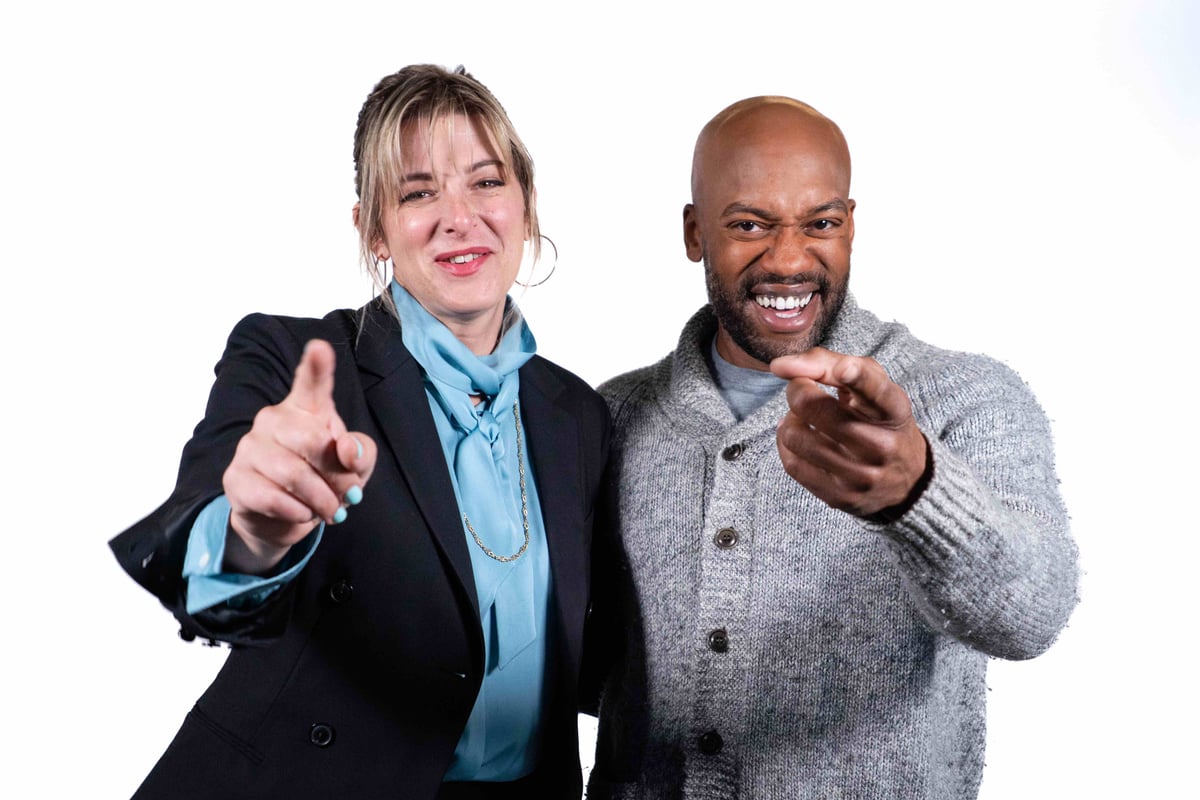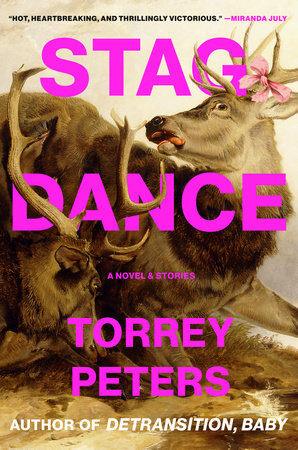
If you take away anything from my newsletter this week, I hope it is your belief in me when I say that you have to – HAVE TO – read Torrey Peters’ new novel, Stag Dance. I consume a lot of pop culture all the time, for obvious reasons. It is rare that any piece of pop culture can keep me up all night. But that happened with Stag Dance, two nights in a row. I deprived myself of sleep to finish it as quickly as possible. That’s how much I loved this book.
Alright, how to describe Stag Dance? Well, the limit does not exist. It’s a novel all about transness, but most of the main characters don’t identify as trans. It’s a novel, but actually it’s a collection of four different pieces of fiction, with one longer than the others, constituting maybe… a novella? But who’s to say. It’s a book full of horror, but it’s also a comedy. It’s a book about love and desire, but also it’s filled with characters whose default, it at times seems, is hate.
The New York Times maybe summed it up best: “A great Torrey Peters story feels like punching yourself in the face,” wrote Hugh Ryan in his Stag Dance review, ”laughing at the bleeding bitch in the mirror and then shamefacedly realizing you’re aroused by the blood on your lips.”
Peters — my guest on this week’s show — agrees, somewhat. When I asked her if she likes creating work that makes the reader extremely uncomfortable, she said yes. “I think that actually writing things that are uncomfortable is also oftentimes writing things that are true,” she told me. “When you write things that are uncomfortable, you get behind … the sort of armor that I think people have.”

And what an armor our culture has around trans issues these days. Trans people and the political debates over where they can be, what they can do, and what kind of medical treatment they can get, has made a community that constitutes less than 1% of the population our nation’s biggest political football right now.
Peters says that writing to get to the uncomfortable emotions behind her characters and transness — while avoiding current politics altogether in her writing — is actually the best way to get people to look at trans life differently. She told me that if she can get people to feel weird, she can have them interrogate those feelings in ways that lead them to new realizations: Why do I feel that way?
And wow, is this book full of feelings. There’s the burly lumberjack built like an ox who’s angry that his fellow woodsmen don’t see him the way he wants to be seen when he volunteers to go to a dance in the woods as a woman. There’s the post-apocalyptic crew of trans people figuring out their alliances and friendships after surviving a pandemic that makes all humans have to take gender affirming hormones, whether they are trans or not. There’s the horror story set at a Las Vegas cross-dressing conference in which a character has to choose to betray at least one of her friends, and choose a path of acceptance or rejection of their transness in the process. And then there’s the story set at a boarding school, all about a romance in the boy’s dorm gone horribly wrong. Honestly, that’s all I can say about that one. It’s so, so heavy, and so good. You just have to read it for yourself.

What I found most impressive about Peters’ new novel, and our conversation, is the way she asks us all to reconsider, in some big ways, how we define transness at a basic level. She talked to me at length about not seeing the trans conversation as one comparing male to female, but maybe looking at the difference between what it means to be cis and trans, and whether the distinction between those two things is even a fixed point. For Peters, it could be something much more fluid, maybe even a spectrum, one that we all live on and move through over the course of our lives.
She also said that transness can be looked at as in invitation to a certain set of feelings, questions, and emotions. For Peters, the core of being trans is, at some point, feeling uncomfortable. Knowing that the version of you that you want to put out into the world isn’t what other people in the world are seeing. A difference between the person you see inside of you, and the one who looks back at you in the mirror. And she says that if we see transness in that way, we all, at some point or another, have had a trans experience. The very essence of that idea isn’t a call to choose a side, or a plot point in a binary, or on a spectrum. It is instead a call for us to ask more questions of ourselves, and of our feelings, and understand that we can understand what it means to be trans if we can understand those uncomfortable emotions, whoever and wherever we are.
Please go read Stag Dance right now. And check out this week’s episode to hear Peters talk about all of this in a much smarter way than I could type. Happy weekend!
— Sam